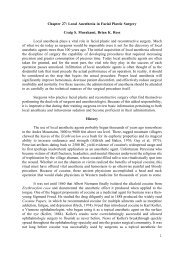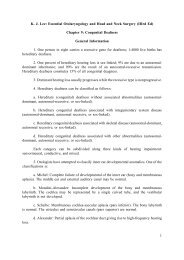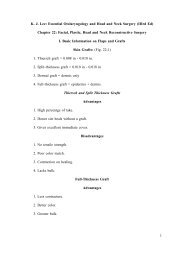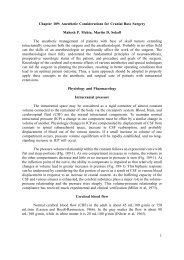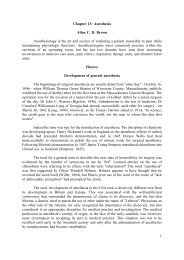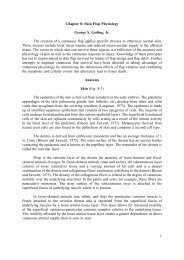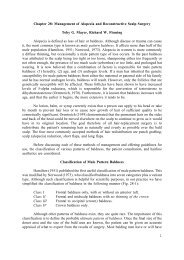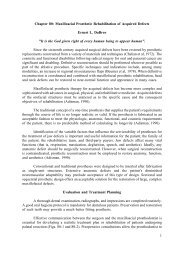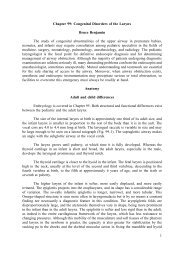You also want an ePaper? Increase the reach of your titles
YUMPU automatically turns print PDFs into web optimized ePapers that Google loves.
with very fine suture material with no tension at the suture site and no overbunching of thecontents of the fibrous linings by overzealous suture.TendonsTendons are highly mobile parts of the anatomy, particularly within the tendon sheathsof the palms and fingers where they are not only mobile within a relatively immobile sheath,but isolated from tissue whence a rich blood supply could come. Tendons fortunately do notneed a rich blood supply because of their relatively low metabolic activity. The blood supplyusually enters the tendon vie mesenteric connections with the surrounding area across thesynovial space. The synovial sheath is essential for allowing a gliding action of the tendon.In the case of the tendons in the hand these attachments are very tenous in the form of stringscalled vinculae. Within the tendon the blood vessels are centrally located running along thelength of the tendon.This whole delicate balance of function and blood supply is upset by trauma and theneed for mechanisms of healing. The blood supply is easily disrupted and any damage to thetendon surface or synovial lining, or both, will tend ot cause adhesions between the tendonand the sheath. This results in characteristic loss of function. The suture of damaged or cuttendons must comply with the following requirements:- it must be as atraumatic as possible- all "raw surfaces" should be avoided- the tendon blood supply must be preserved- the tendon sheath must also be repaired with atraumatic methods.Problems encountered are:- the tendon ends are often difficult to find- the damage to the tendon and sheaths may be excessive and not easy to repair- closure of the sheath after opening to find and repair tendons can be difficult- the technique of atraumatic tendon suture is demanding.Best results are obtained with a laced suture of 4/0 nonabsorbable material in thetendon to pull it into position, followed by a 6/0 continuous suture around the cut edges toneaten it. The sheath must be repaired in its entire length to avoid contact between the tendonand tissues outside the synovial lining. Magnification in the form of an operating microscopewill again improve results.Blood VesselsFrom Poiseuille's law for fluid flow in a hollow tubeBF=(PxD 4 xc)/VxLit can be seen that the diameter of the vessel is by far the most critical factor. It isnow possible to suture vessels from 0.5 mm in diameter as well as the larger vessels. The13




